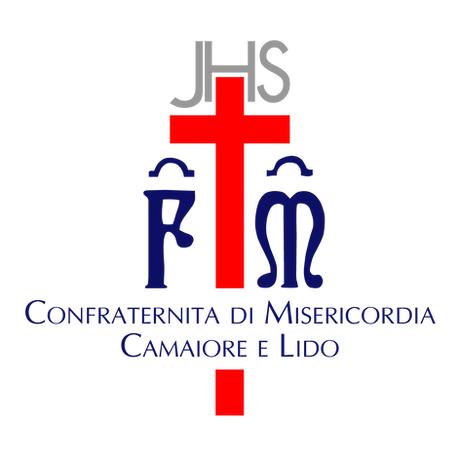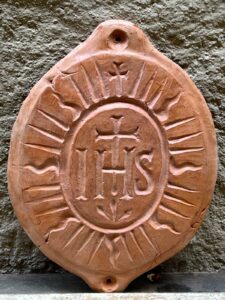
Mercy Celebration and Symbolism: The Day of the Name of Jesus in Camaiore
Discover how the Name of Jesus festival in Camaiore combines tradition and modernity, reflecting the city’s mission of mercy
Every year, on June 1, the town of Camaiore in Italy celebrates with fervor and devotion the Name of Jesus, an event that stands out not only for its deep religious significance but also for its cultural and social impact on the community. Since 2020, this anniversary has taken on additional symbolic value as the Name of Jesus has been chosen as the element overlaying the logo of the Camaiore and Lido Mercy, underscoring an intrinsic link between the celebration and the city’s commitment to charity and mercy.
Origins and History of the Celebration
The Feast of the Name of Jesus has deep roots in Catholic tradition and reflects the importance of the name of Jesus in Christian spirituality. This particular veneration in Camaiore is enhanced by the presence of the Mercy logo, which since 2020 has included the Name of Jesus, highlighting the message of compassion and mutual aid promoted by the organization. The choice of this symbol is not accidental but the result of reflection on the Name’s ability to immediately evoke love, care and protection toward those most in need.
Symbolism and Meaning of the Misericordia Logo
The Camaiore and Lido Mercy logo, with the Name of Jesus – I H S – towering above it , serves as a powerful visual reminder of the community’s commitment to works of charity and social assistance. The design aims to represent a sense of welcome and hope, qualities that are at the heart of Mercy’s mission. Through this symbol, every initiative and activity promoted acquires a deeper spiritual dimension, linking faith with concrete action in social work.
Celebrations: Union of Faith and Community
On June 1 in Camaiore, celebrations for the Name of Jesus are manifested through solemn masses and community activities with the active participation of many citizens, parish groups, and Misericordia volunteers.
Cultural and Social Impact
The inclusion of the Name of Jesus in the Misericordia logo has not only enhanced the organization’s visibility but also deepened the link between the holiday and Camaiore’s cultural identity. This symbol has become a landmark reminding sisters, brethren, residents and visitors of the importance of the city’s Christian roots and its commitment to promoting values of justice, peace and charity.

The Trigram of St. Bernadine of Siena: A Symbol of Peace and Devotion
Learn how St. Bernadine’s Trigram has unified communities and renewed faith through history.
The Origin of the Trigram
St. Bernardine of Siena, with a profoundly psychological insight and a futuristic communication strategy, created a symbol destined to become a powerful instrument of unity and peace. His trigram, designed to be easily recognized and remembered, was placed in public and private places, often in place of family crests and corporate insignia, symbols of local divisions and conflicts. This initiative not only facilitated the spread of the Christian message but also promoted a sense of community belonging that was superior to social divisions.

The symbolic meaning of the Trigram
St. Bernadine’s trigram, characterized by the radiant sun on a blue field with the letters IHS, reflects complex theological and spiritual interpretations. Originally, the letters IHS are an acronym for the name of Jesus in Greek (ΙΗΣΟΥΣ), but over time they have taken on additional meanings such as “In Hoc Signo” and “Iesus Hominum Salvator.” Each element of the symbol is loaded with meaning: the sun represents Christ the source of life, the rays the twelve Apostles and the eight beatitudes, and the outer circle the perpetual blessedness of the saints. Bernardine further personalized the symbol, turning part of the H into a cross, enriching the trigram with a further spiritual dimension.
Cultural impact and dissemination in Europe
The trigram did not remain confined to Siena or Italy, but crossed borders reaching the whole of Europe, even being adopted by historical figures such as Joan of Arc and later by the Jesuits. Its ability to evoke the life of Christ and the principles of Christianity in such a direct and emotional way made it an ideal tool for the evocation of the early Church, as desired by St. Bernadine. The symbol served as a catalyst for meditation and prayer, strengthening devotion among the faithful and acting as a bridge between the divine and the everyday.
Devotion through the centuries
St. Bernadine is part of a tradition of devotion that goes back to St. Paul and includes key figures such as St. Francis of Assisi and the Doctors of the Church of the Middle Ages. His emphasis on the naming of Jesus as an act of devotion also found fertile ground in the congregation of the Jesuits, founded in Siena by Giovanni Colombini, who devoted themselves to the care of the sick by frequently pronouncing the name of Jesus. The continuity of this tradition shows how the trigram was not only a visual symbol but also a powerful tool for spiritual and communal renewal.
A legacy of unity and mercy
The trigram of St. Bernadine of Siena represents a shining example of how faith can be expressed and spread through symbols that speak directly to the hearts of believers. His legacy endures as a testimony to religion’s ability to overcome divisions and build communities based on values of peace, mercy and charity, reflecting the universality and temporality of the Christian message in ever-changing contexts.

Photo
- misericordiacamaiorelido.org
- spazio+spadoni
